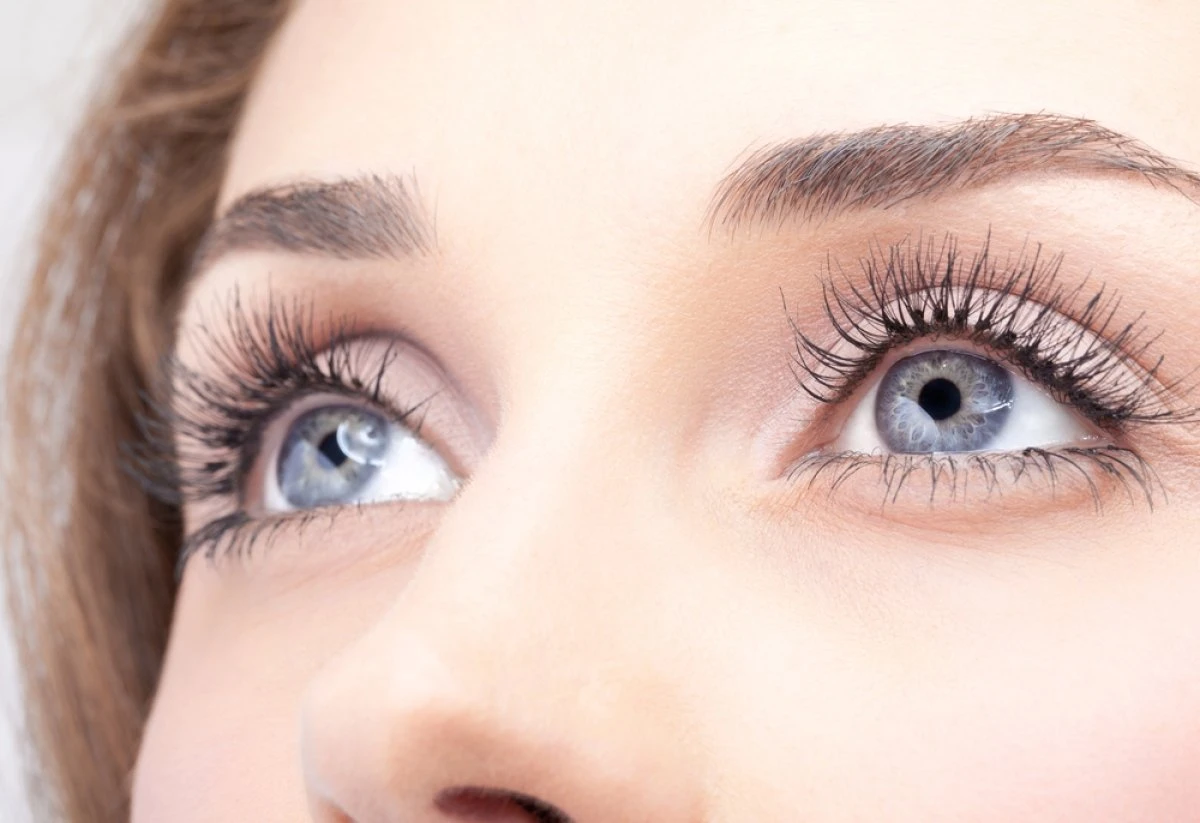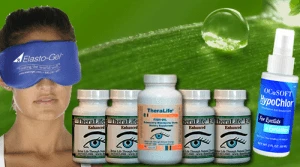When exploring the triggers of Sjogren’s syndrome, several environmental factors, such as exposure to organic solvents, metals, and persistent viral infections, are known to influence immune responses and exacerbate symptoms. TheraLife offers products designed to benefit individuals dealing with these triggers by providing natural solutions aimed at improving eye health and alleviating dry eyes, which are common symptoms associated with Sjogren’s syndrome.
TheraLife’s products focus on enhancing the body’s natural ability to produce tears and manage inflammation. Their formulas utilize natural ingredients to support eye health, addressing issues like blepharitis and dry eyes, and offering relief from ocular discomfort exacerbated by environmental factors like air pollution and toxins.
Moreover, TheraLife emphasizes the importance of lifestyle and dietary changes, as seen in their anti-inflammatory diet recommendations, to help manage the symptoms of Sjogren’s syndrome. By integrating their products with holistic practices, customers can achieve improved comfort and better manage the impact of environmental triggers on their health. Explore TheraLife’s offerings to understand how their targeted solutions can benefit those affected by Sjogren’s syndrome.
Powerful All Natural Oral Treatment for Sjogren’s Dry Eyes, Joint Pain.
Add To Cart
Key Takeaways
- Organic solvents are linked to Sjogren’s syndrome through immunological alterations and autoimmune responses.
- Exposure to metals like chromium, nickel, and mercury increases Sjogren’s syndrome risk via hypersensitivity reactions.
- Occupational exposure to silica dust and hazardous chemicals significantly elevates Sjogren’s syndrome risk.
- Viral infections such as Epstein-Barr Virus and Hepatitis C Virus can trigger Sjogren’s syndrome development.
- Air pollution, particularly PM2.5, is associated with increased Sjogren’s syndrome-related hospitalizations.
Chemical Exposure Risks
While chemical exposure risks are a significant concern for those susceptible to autoimmune diseases, emerging evidence underscores the association between organic solvents (OSs) and Sjogren’s syndrome. Solvent exposure is linked to immunological alterations that could trigger autoimmune responses. Historical cases since 1957, involving substances like vinyl chloride, emphasize this potential risk. Systematic reviews have confirmed a link between OSs and autoimmune diseases, necessitating further investigation into their role in Sjogren’s syndrome. Environmental triggers, including silica and other industrial emissions, have been associated with exacerbating autoimmune conditions. VOC risks, stemming from compounds such as trichloroethylene and benzene, are well-documented, showing associations with autoimmune responses. These compounds can interact with cell membranes, potentially leading to the syndrome’s development. Expert consensus suggests that vigilance in environments with such chemical exposures is essential for susceptible individuals.
Metal-Induced Triggers
Emerging research highlights the role of metal-induced triggers in the development of Sjögren’s syndrome, emphasizing the need to understand specific mechanisms involved. Direct exposure to metals like chromium, nickel, and mercury has been linked to increased risks, with metal allergy and hypersensitivity reactions playing key roles. These metals, often found in dental materials, can provoke delayed-type hypersensitivity, involving metal-specific T cell reactivity. Women and individuals with autoimmune conditions are particularly susceptible. Metal-induced reactions are antigen-specific, triggering systemic inflammatory responses rather than just localized symptoms. Understanding these hypersensitivity mechanisms is essential for managing Sjögren’s syndrome effectively. Notably, autoimmune disorders such as Sjögren’s syndrome often involve inflammation in the gut, which can be influenced by dietary choices. Identifying metals responsible for these reactions can guide targeted interventions and inform clinical decisions regarding metal exposure history. Additionally, exposure to chromium in industrial settings has been associated with an increased risk for Sjögren’s syndrome, highlighting the importance of regulatory measures to limit such exposures.
Viral Infections Impact
You should consider how viral infections like Epstein-Barr Virus (EBV), Hepatitis C Virus (HCV), and Cytomegalovirus (CMV) greatly impact the development of Sjögren’s syndrome. EBV reactivation is linked to increased autoantibody production, while HCV infection is associated with unique immunological patterns contributing to xerostomia. CMV’s persistent salivary gland infection can lead to tissue destruction, underscoring its role in the syndrome’s pathology. Persistent infections are hypothesized to be significant risk factors for SS, with these infectious agents stimulating the production of anti-Ro/SSA and anti-La/SSB antibodies. Additionally, genetic factors play a role in the development of Sjögren’s syndrome, indicating a complex interplay between genetic predisposition and environmental triggers.
Epstein-Barr Virus Connection
Research indicates a significant association between Epstein-Barr virus (EBV) infection and Sjögren’s syndrome (SjS), highlighting the virus’s potential role in autoimmune disease pathogenesis.
You’ll find that EBV infection is linked to SjS through higher prevalence and titers of specific EBV antibodies in patients. Importantly, SjS patients often exhibit increased IgG-anti-EA and IgG-anti-VCA antibody levels, correlating with distinct lymphocytic profiles. Over 90% of adults have been infected by EBV by age 40, which underscores its potential impact on autoimmune conditions like Sjögren’s syndrome.
This suggests EBV’s involvement in triggering autoimmune responses. The virus may influence B and T cell differentiation, promoting effector cell development typical in autoimmune conditions. EBV’s persistence in the body can also lead to chronic fatigue, a common symptom observed in individuals with Sjögren’s syndrome.
Additionally, EBV’s persistence in salivary glands could be vital to SjS pathogenesis, pointing to its significant impact on autoimmune responses. Understanding these mechanisms could inform future therapeutic strategies.
Hepatitis C Influence
In exploring the landscape of viral influences on Sjögren’s syndrome (SjS), attention turns to Hepatitis C virus (HCV) and its considerable impact on this autoimmune condition. You’ll find that HCV prevalence in SjS patients ranges from 14% to 19%, with a striking 45.1% in certain demographics. This suggests a strong link between HCV and autoimmune responses, particularly in younger patients under 55. Chronic HCV infection is associated with a markedly increased risk of developing SjS, with HCV’s lymphotropism playing a critical role in this connection. B-cell hyperactivity, induced by continuous viral antigen exposure, mirrors SjS’s immunological features. Notably, DAAs treatment has been linked to significant clinical and immunological enhancements in HCV patients with sicca manifestations, further supporting the importance of early intervention. In addition to viral influences, other factors such as immune modulation can play a significant role in managing Sjögren’s syndrome symptoms. Remarkably, direct-acting antivirals (DAAs) can considerably ameliorate sicca symptoms and autoimmune responses, highlighting the importance of early treatment.
Cytomegalovirus’s Role
While the role of viral infections in triggering autoimmune diseases like Sjögren’s syndrome (SjS) is complex, cytomegalovirus (CMV) emerges as a significant factor worth examining. CMV infection has been linked to the pathogenesis of SjS, particularly in genetically susceptible individuals. It can persist in salivary glands, causing symptoms akin to SjS and leading to chronic inflammation and tissue damage. The infection stimulates the immune system, increasing autoreactive T-cells, which can exacerbate autoimmune reactions. Ocular manifestations similar to those seen in rheumatoid arthritis may also be present in Sjögren’s syndrome, affecting patients’ quality of life. The exact cause of Sjögren’s syndrome is unknown but is believed to be triggered by a combination of genetic, environmental, and possibly hormonal factors. Although CMV doesn’t directly trigger specific autoantibodies, it contributes to their production in some cases. Experimental evidence from murine models supports these findings, showing CMV infection’s potential in inducing SjS-like symptoms. Understanding CMV’s role may enhance early diagnosis and management strategies for SjS.
Air Quality Concerns
Although often overlooked, air quality plays a significant role in the health of individuals with Sjögren’s syndrome. Air pollution impacts environmental health by increasing Sjögren’s syndrome-related hospitalizations, especially during colder seasons. Particularly, PM2.5 and PM10 are linked to ocular surface damage and systemic disease activity. Exposure to pollutants like nitrogen dioxide and carbon monoxide can worsen symptoms. Chronic exposure to air pollution adversely affects ocular surface health, with epidemiological studies linking pollution to increased ocular symptoms and diseases. The connection between air pollution and ocular conditions in Sjögren’s syndrome is similar to the dry eyes experienced by individuals with rheumatoid arthritis.
| Pollutant | Impact on Sjögren’s Syndrome |
|---|---|
| PM2.5 and PM10 | Increased hospitalizations, ocular damage |
| Nitrogen Dioxide | Correlates with ocular surface damage |
| Carbon Monoxide | Influences systemic disease activity |
| Volatile Organic Compounds | Affects systemic disease activity |
| Sulfur Oxides | Impacts systemic disease activity |
Reducing exposure to these pollutants is crucial for managing Sjögren’s syndrome and improving patient outcomes. Incorporating air quality assessments in clinical practice enhances therapeutic strategies.
Genetic Susceptibility
Understanding the genetic susceptibility to Sjögren’s syndrome reveals a complex interplay of risk factors. The strongest genetic association involves HLA genes, underscoring their role in autoimmune diseases. If you have a family history of Sjögren’s, you’re more likely to develop it, indicating genetic factors at play. Women face a higher risk, potentially due to genetic components on the X chromosome. Non-HLA genes like IRF5 and STAT4 also contribute, albeit less notably. Sjögren’s syndrome often co-occurs with other autoimmune disorders such as lupus and rheumatoid arthritis, which further complicates the genetic landscape. Genetic concordance in monozygotic twins and familial aggregation point to inherited predispositions. However, it’s more common to inherit susceptibility to autoimmune diseases broadly rather than Sjögren’s specifically. Cevimeline, a medication used to alleviate symptoms like dry mouth, can play a role in managing the effects of Sjögren’s syndrome. Genetic research continues to explore the underlying mechanisms, highlighting the interaction between genetic and environmental influences in disease development.
Occupational Hazard Exposure
When considering occupational hazards, your exposure to silica dust and hazardous chemicals plays a vital role in the risk of developing Sjögren’s syndrome. Studies show that chemical exposures, such as toluene and chlorinated solvents, greatly increase this risk, highlighting the importance of understanding workplace environments. Occupational exposure to harmful substances can also lead to increased intestinal permeability, which may exacerbate autoimmune symptoms associated with Sjögren’s syndrome. Research has also suggested that exposure to air pollutants like fine particulate matter (PM2.5) may contribute to the development of Sjögren’s syndrome, emphasizing the need for both environmental and occupational safety measures. Addressing these exposures through targeted safety measures can be essential in reducing disease incidence.
Silica Dust Impact
Silica dust exposure in occupational settings has drawn attention due to its association with various health risks, including potential links to systemic autoimmune diseases like Sjögren’s syndrome.
While research on silica exposure highlights its role in conditions like silicosis and lung cancer, its connection to autoimmune responses remains uncertain. Studies show mixed results, with some suggesting a potential link to Sjögren’s syndrome but lacking statistical significance.
High-level silica exposure is associated with autoimmune diseases such as scleroderma and rheumatoid arthritis, implying possible mechanisms affecting immune function. However, there’s no clear causal link to Sjögren’s syndrome. Dry eye symptoms are common in autoimmune conditions like Sjögren’s syndrome and Graves’ disease, further emphasizing the need to explore environmental triggers.
Further research is essential to understand if silica exposure contributes to its development, focusing on specific occupational groups and immune mechanisms involved.
Hazardous Chemical Exposure
While occupational exposure to hazardous chemicals has long been recognized as a health risk, recent studies suggest a notable link to autoimmune diseases like Sjögren’s syndrome. Solvent exposure, particularly to substances like toluene, white spirit, and benzene, considerably elevates the risk. For instance, dichloromethane shows an odds ratio (OR) of 9.28, reflecting its strong association with Sjögren’s syndrome. Notably, high cumulative styrene exposure has been linked to an increased risk for systemic sclerosis, indicating the importance of understanding environmental influences on autoimmune conditions. The pathogenesis often involves prolonged exposure, where cumulative risk depends on intensity and duration. Detecting at-risk individuals requires detailed exposure assessments and awareness of chemical safety practices. Additionally, genetic predispositions, combined with environmental triggers, highlight the need for preventive strategies. By understanding these associations, you can better navigate occupational risks and prioritize protective measures in chemical safety.
Environmental Toxin Effects
Numerous environmental toxins have been identified as potential triggers for Sjögren’s syndrome, highlighting the complex interplay between chemical exposures and autoimmune responses.
Toxic substances like silica, mercury, and cadmium are linked to increased risk due to their interference with physiological processes.
Environmental pollutants, including trichloroethylene and volatile organic compounds (VOCs), have been associated with autoimmune responses, particularly in contaminated water supplies like those at Camp Lejeune.
Industrial emissions and hazardous wastes can mimic hormones and disrupt development, potentially triggering autoimmune diseases.
Air pollution and chromium exposure further complicate the risk landscape.
Understanding these factors allows you to identify and potentially mitigate risks associated with environmental toxin effects, vital for managing and preventing the development of Sjögren’s syndrome.
Powerful All Natural Oral Treatment for Sjogren’s Dry Eyes, Joint Pain.
Add To Cart
Frequently Asked Questions
Can Lifestyle Changes Reduce the Risk of Developing Sjögren’s Syndrome?
You can potentially reduce the risk of developing Sjögren’s syndrome by adopting specific lifestyle changes.
Regular exercise habits can enhance your overall health and may lower symptom severity.
Maintaining proper hydration levels is essential, as it helps manage dryness, a common symptom of the condition.
While these measures can’t guarantee prevention, evidence suggests they contribute to better health outcomes, supporting your body’s resilience against autoimmune triggers.
What Role Does Diet Play in Managing Sjögren’s Syndrome Symptoms?
Imagine tackling Sjögren’s syndrome head-on, using diet as your weapon.
You’ll find that anti-inflammatory foods, like omega-3-rich fish and vitamin E-laden nuts, play a vital role. They’re not just delicious; they actively reduce inflammation.
Don’t underestimate the power of hydration strategies; high-moisture foods like cucumbers and smoothies can alleviate dryness.
Carefully selecting these elements in your diet can greatly improve symptoms and enhance your quality of life.
How Does Stress Influence the Onset of Sjögren’s Syndrome?
When you experience stress, it can greatly influence the onset of Sjögren’s syndrome. Research shows that negative life events correlate with increased disease activity, emphasizing the importance of stress management.
Chronic stress can worsen symptoms, highlighting its psychological impact. Managing stress through therapeutic interventions may help prevent or alleviate symptoms.
Analyzing these stress factors offers insight into their role in disease progression and underscores the necessity of addressing mental health in Sjögren’s patients.
Is There a Link Between Sjögren’s Syndrome and Other Autoimmune Diseases?
You might wonder about the link between Sjögren’s syndrome and other autoimmune diseases.
There’s an autoimmune overlap, where conditions like rheumatoid arthritis or lupus often coexist with Sjögren’s. This overlap is partly due to a genetic predisposition, making you more susceptible to multiple autoimmune disorders.
Evidence suggests that having one autoimmune disease increases your risk of developing others, highlighting the need for thorough management and early diagnosis to address these interconnected conditions effectively.
Are There Preventive Measures for Sjögren’s Syndrome in High-Risk Individuals?
You can employ preventive strategies if you’re at high risk for Sjögren’s syndrome.
Focus on avoiding dry and polluted environments by using humidifiers and protective gear. Adjust your diet to include soft, moist foods and avoid triggers like caffeine and alcohol.
Maintain good dental hygiene and regularly sip water. Reduce exposure to harmful chemicals and UV light.
These measures can help mitigate high-risk factors and better manage potential symptoms.
Powerful All Natural Oral Treatment for Sjogren’s Dry Eyes, Joint Pain.
Add To Cart
Conclusion
In understanding Sjogren’s syndrome, it’s essential to recognize the interplay between environmental factors and genetic predispositions. Key triggers such as chemical exposures, metals, and viral infections can ignite the syndrome’s onset, while air quality and occupational hazards further compound these risks. These elements weave a complex web that can trigger the condition.
TheraLife’s products provide significant benefits to customers managing Sjogren’s syndrome and related conditions. By using natural solutions, TheraLife offers effective symptom relief without harsh chemicals. Their products are designed to enhance eye health, support the immune system, and alleviate discomfort associated with dry eyes, blepharitis, and other ocular conditions. With a focus on holistic care, TheraLife empowers individuals to proactively address their health challenges and improve their quality of life. Awareness and mitigation, alongside TheraLife’s offerings, serve as strong allies in navigating these environmental challenges effectively.





